As you age, maintaining strength becomes a crucial aspect of overall health and independence. Strength training for those over 70 isn’t about lifting heavy weights or grueling gym sessions; it’s about preserving muscle mass, improving balance, and boosting daily functional capabilities. Aging naturally leads to sarcopenia, the gradual loss of muscle mass, which can affect mobility and increase the risk of falls. Regular strength exercises tailored to the needs of older adults can counteract these effects, allowing individuals to enjoy their golden years with vitality.
Additionally, strength training helps maintain bone density, reducing the risk of osteoporosis-related fractures. For older adults, this means not just staying physically strong but also protecting critical structures like the hips and spine from injuries. Coupled with improved joint stability and enhanced coordination, the benefits extend far beyond physical health. By fostering confidence in movement, strength exercises empower older adults to maintain independence and engage in activities they love.
It’s important to choose exercises that are safe and adaptable for this age group, with modifications for any physical limitations. The following weekly routine is designed with simplicity and effectiveness in mind, targeting major muscle groups while emphasizing joint health and balance. Incorporate these exercises into your weekly schedule to build strength, improve posture, and enhance your overall quality of life.
The Exercises
Chair Squats
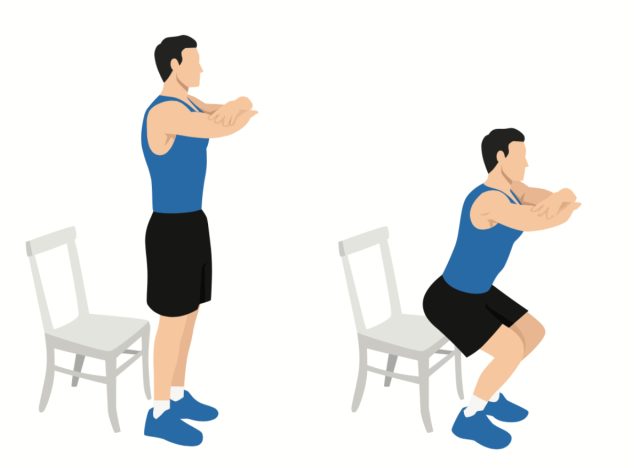
Chair squats are an essential exercise for older adults because they closely mimic daily activities like sitting down and standing up. This functional movement strengthens the quadriceps, hamstrings, and glutes, vital for maintaining independence and mobility.
By engaging the lower body muscles, chair squats can help improve overall balance and reduce the risk of falls, which is particularly important for those over 70. Additionally, this exercise enhances joint flexibility in the hips and knees, ensuring they remain mobile and resilient as you age.
- Place a sturdy chair behind you.
- Stand with feet shoulder-width apart, arms extended forward for balance.
- Slowly lower yourself by bending at the hips and knees, keeping your back straight.
- Lightly touch the chair seat without fully sitting down.
- Push through your heels to return to a standing position.
- Perform 10–12 repetitions.
Wall Pushups
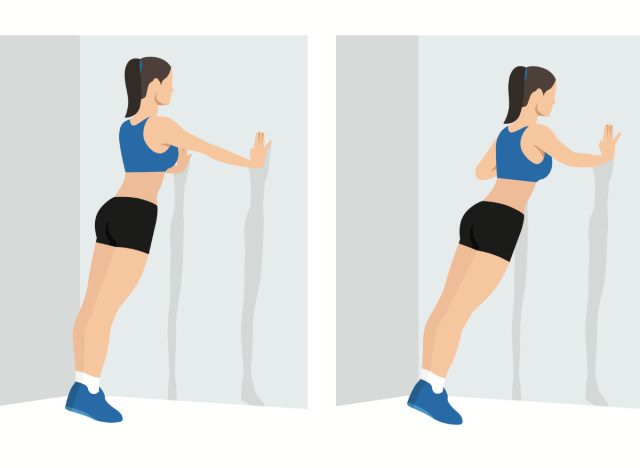
Wall pushups provide a safe and effective way to strengthen the upper body without the strain of traditional pushups. They target the chest, shoulders, and triceps, which are crucial for tasks such as pushing open doors, lifting objects, or even getting up from a lying position.
This low-impact exercise places minimal stress on the wrists and shoulders, making it ideal for older adults with joint concerns. Regularly performing wall pushups can improve posture by counteracting the rounded shoulders that often accompany aging.
- Stand an arm’s length away from a wall.
- Place your palms on the wall at shoulder height, slightly wider than shoulder-width apart.
- Slowly bend your elbows and lean toward the wall, keeping your body straight.
- Push back to the starting position.
- Complete 10–15 repetitions.
Seated Leg Lifts
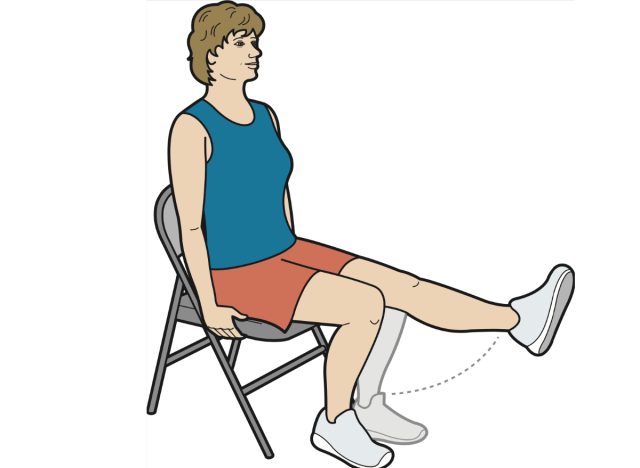
Seated leg lifts are a simple yet highly effective way to strengthen the quadriceps and hip flexors, muscles that are essential for walking, climbing stairs, and maintaining overall balance. This exercise can also help improve leg circulation, reducing stiffness and promoting better joint health.
For those who spend extended periods sitting, seated leg lifts offer a gentle way to engage the lower body without putting pressure on the knees or hips. With consistent practice, this exercise can contribute to stronger, more stable legs and greater ease of movement in daily activities.
- Sit on a sturdy chair with your back straight and feet flat on the floor.
- Extend one leg straight out in front of you, keeping it parallel to the floor.
- Hold for 3–5 seconds, then lower slowly.
- Repeat 10–12 times on each leg.
Standing Calf Raises
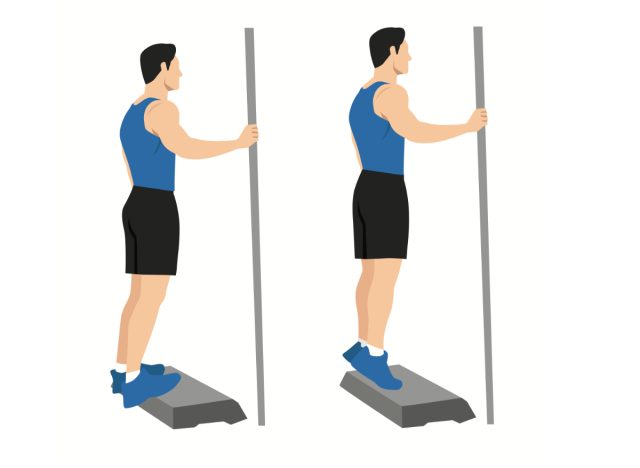
Calf raises are invaluable for strengthening the lower legs, particularly the calves and ankles, which play a crucial role in balance and mobility. For older adults, this exercise enhances the ability to walk, climb stairs, and maintain stability on uneven surfaces. Strong calves also support ankle joint health, reducing the likelihood of sprains or falls.
Moreover, this exercise improves circulation in the lower extremities, which is especially beneficial for those who experience swelling or poor blood flow.
- Stand behind a chair and hold the backrest for support.
- Slowly lift your heels off the ground, rising onto the balls of your feet.
- Pause briefly at the top, then lower your heels back down.
- Perform 10–15 repetitions.
Overhead Dumbbell Press
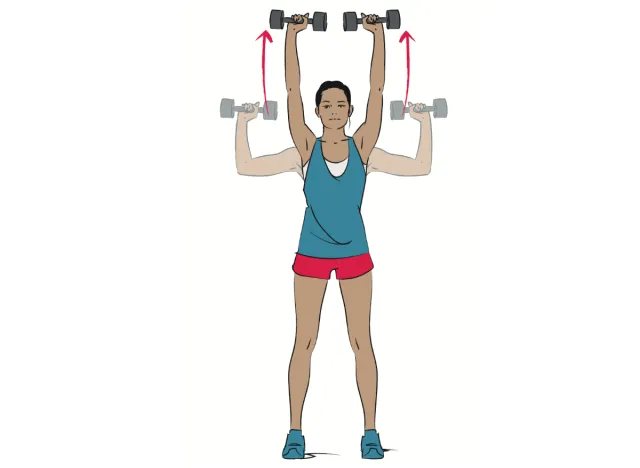
The overhead dumbbell press is a great way to maintain strength and mobility in the shoulders, arms, and upper back. These muscle groups are essential for everyday tasks like reaching for items on high shelves, carrying groceries, or brushing your hair. Additionally, this exercise promotes good posture by counteracting the forward rounding of the shoulders that can occur with age.
Keep in mind that using light dumbbells ensures that the exercise is both effective and safe for older adults.
- Sit on a sturdy chair or stand with feet shoulder-width apart.
- Hold a light dumbbell in each hand at shoulder height, palms facing forward.
- Press the dumbbells upward until your arms are fully extended.
- Slowly lower them back to the starting position.
- Perform 8–10 repetitions.
Bird Dog
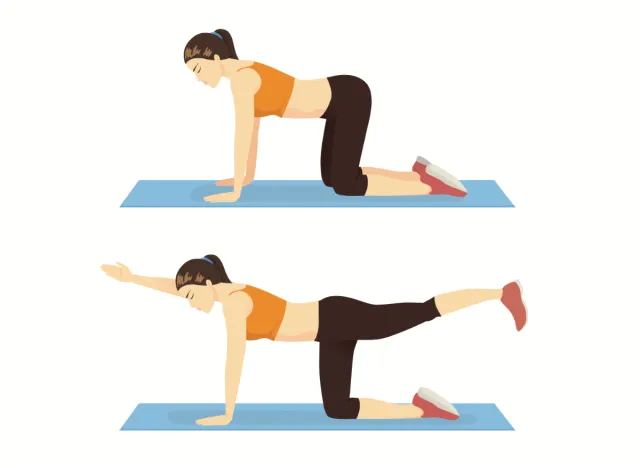
The bird dog exercise improves core stability, balance, and coordination. It engages the lower back, glutes, and abdominal muscles, which are vital for maintaining proper posture and preventing lower back pain. This exercise also challenges your balance, making it a great choice for older adults looking to enhance their stability.
By practicing the bird dog regularly, you can improve your ability to perform everyday tasks that require bending, reaching, or twisting.
- Begin on all fours on a mat, with hands under shoulders and knees under hips.
- Extend your right arm and left leg simultaneously, keeping your back straight.
- Hold for 2–3 seconds, then return to the starting position.
- Repeat with the opposite arm and leg.
- Perform 8–10 repetitions per side.
Side Leg Raises
Side leg raises are an excellent way to strengthen the hip abductors, which play a key role in side-to-side stability and overall balance. These muscles are often underutilized but are essential for reducing the risk of falls and maintaining a stable gait. Side leg raises also help improve mobility in the hip joints, which can become stiff with age.
By regularly performing this exercise, older adults can enhance their ability to navigate uneven surfaces and maintain better posture during daily activities.
- Stand next to a chair and hold it for balance.
- Lift one leg to the side, keeping it straight and avoiding tilting your torso.
- Slowly lower your leg back to the starting position.
- Repeat 10–12 times on each leg.
Bicep Curls
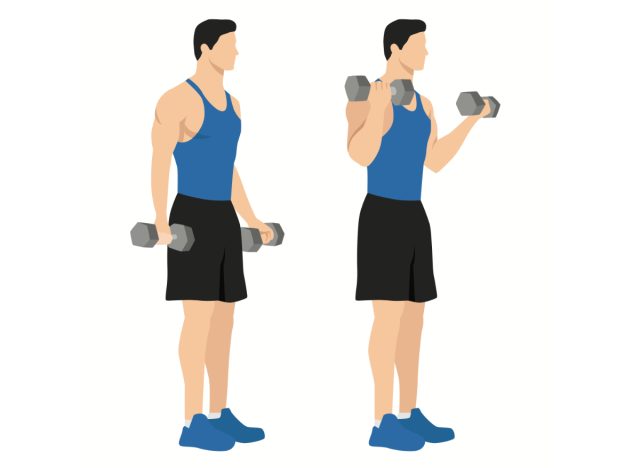
Bicep curls are a simple yet effective exercise to strengthen the arms, particularly the biceps, which are essential for lifting, carrying, and other everyday tasks. This exercise also supports elbow joint stability, making movements like pulling or picking up objects more comfortable and efficient. Over time, stronger arms can increase confidence in performing daily activities independently.
Remember that opting for light dumbbells ensures the exercise is safe for older adults, even those with joint concerns or limited strength.
- Hold a light dumbbell in each hand with palms facing forward.
- Stand or sit with your back straight and elbows close to your sides.
- Slowly curl the dumbbells toward your shoulders while keeping your upper arms stationary.
- Lower the dumbbells back to the starting position.
- Perform 10–12 repetitions.
Glute Bridges
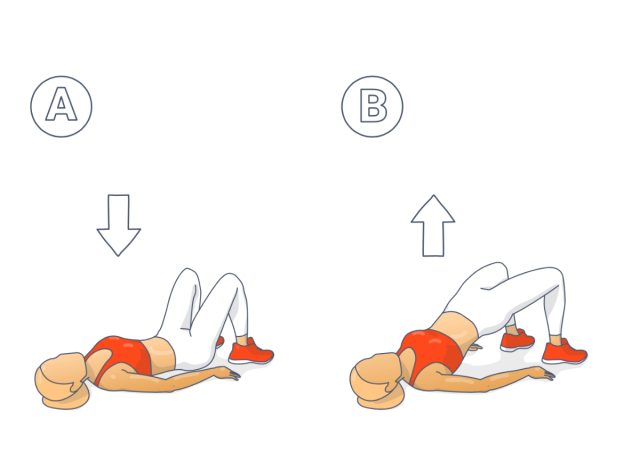
Glute bridges are a powerful exercise for strengthening the glutes, hamstrings, and lower back. They help maintain hip stability and reduce lower back pain. This exercise also engages the core, promoting better posture and reducing the likelihood of injuries caused by weak or imbalanced muscles.
For older adults who spend a lot of time sitting, glute bridges can counteract muscle tightness and improve mobility. Regular practice of this exercise contributes to better overall lower body strength and flexibility, making it easier to stand, walk, or climb stairs.
- Lie on your back with knees bent and feet flat on the floor, hip-width apart.
- Place your arms by your sides with palms facing down.
- Press through your heels and lift your hips toward the ceiling, creating a straight line from shoulders to knees.
- Hold the position for 2–3 seconds, then slowly lower your hips back down.
- Complete 10–12 repetitions.
Towel Squeeze
The towel squeeze targets the inner thighs, an often-overlooked muscle group that plays a key role in pelvic stability and balance. Strengthening the inner thighs can enhance your ability to perform tasks like standing from a seated position or stabilizing yourself during lateral movements.
This exercise is particularly gentle, making it ideal for older adults with joint pain or mobility limitations. Over time, improved inner thigh strength can help reduce the risk of falls and support better posture.
- Sit on a sturdy chair with feet flat on the floor.
- Place a rolled-up towel between your knees.
- Squeeze the towel with your knees, engaging the inner thigh muscles.
- Hold the squeeze for 5 seconds, then release.
- Repeat 10–15 times.








